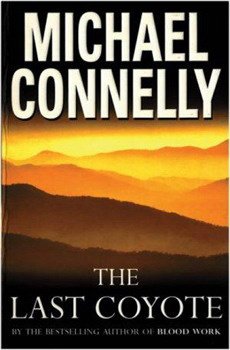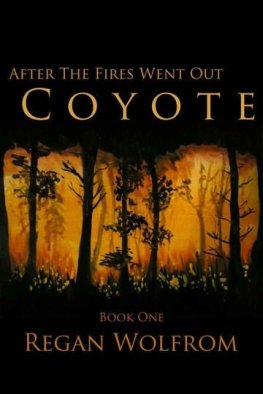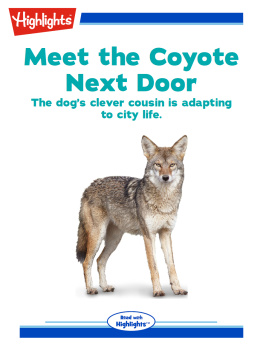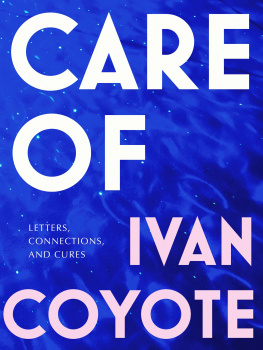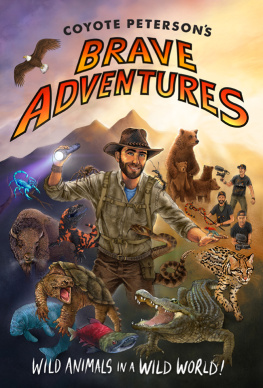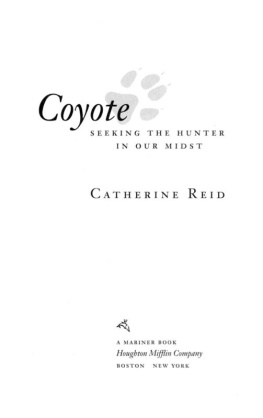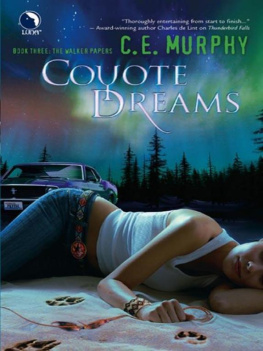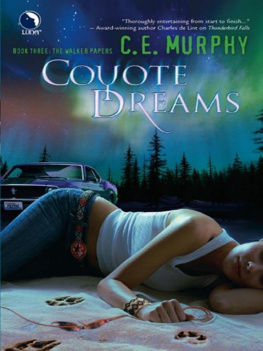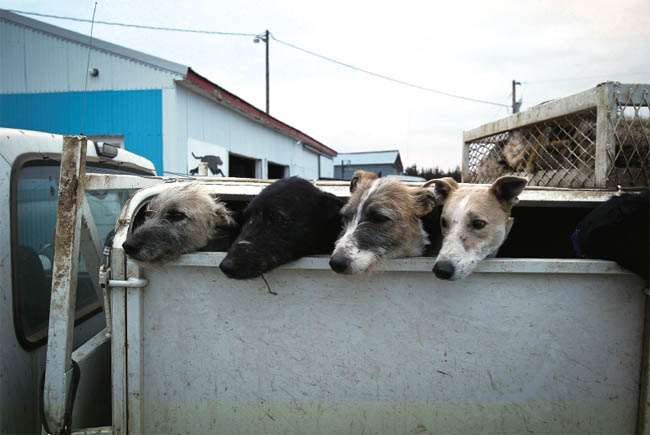

To See Them Run
Great Plains Coyote Coursing
Eric A. Eliason
Photographs by Scott Squire
Foreword by Stephen Bodio

www.upress.state.ms.us
The University Press of Mississippi is a member of the Association of American University Presses.
Publication is made possible in part by a grant from the College of Humanities, Brigham Young University.
Unless otherwise credited, photographs are by Scott Squire.
Copyright 2015 by University Press of Mississippi
All rights reserved
Manufactured in Malaysia
First printing 2015
Library of Congress Cataloging-in-Publication Data
Eliason, Eric A. (Eric Alden), 1967
To see them run : Great Plains coyote coursing / Eric A. Eliason ; photographs by Scott Squire ; foreword by Stephen Bodio.
pages cm
Includes bibliographical references and index.
ISBN 978-1-4968-0386-3 (cloth : alk. paper) ISBN 978-1-4968-0387-0 (ebook) 1. Coyote trappingGreat Plains. 2. CoyoteGreat Plains. 3. Tracking and trailingGreat Plains. 4. Prairie animalsGreat Plains. I. Title. II. Title: Great Plains coyote coursing.
SK341.C65E45 2015
639.9797725097648dc23
2014049374
British Library Cataloging-in-Publication Data available
Foreword
I love the jumping, leaping, baying right out of the box. But mostly I am in it to see them run. Id follow them anywhere they go.
Todd Fritz, coyote hunter
I am a writer by profession and scholar by inclination and an unabashed, old-fashioned, hands-on, tale-telling naturalist. My academic background is in evolutionary biology with a side dish of literature. Most of my books have been about the memes of human-animal interaction; as a falconer, pigeon breeder, and hound man, my passions have taken me from New England to the deserts of New Mexico, the fertile plains of Turkey, and the steppes of Central Asia to see, study, and enjoy hounds and horses, guardian dogs, hunting hawks and eagles, even pigeons. The ancient methods of work and sport with animals helped shape the way we all live, eat, even think. But until recently the fact that they were living practices seemed to be neglected by scholars, which is why I read To See Them Run with growing delight.
Hunting with hounds may be a perfect example of what Elizabeth Marshall Thomas calls the old ways; it is a practice that may date to our oldest human origins or even predate so-called modern humans. Humans have at very least worked with their co-evolved social partners for thousands of years. I have seen petroglyphs in the steppes of Central Asia six thousand years old that show hunters and hounds baying up big game. But, except perhaps for formal English fox hunting, hunting with hounds is an invisible practice, one that flies well under the academic cultural radar.
This is especially true of coursing, the sport of taking game or predators with what Eric Eliasons hunting friends aptly call land rockets, practical, long dogs that run better than any track greyhound. These days the practice is banned in such places as densely populated England and most of Europe (though even there blue-collar hunters take deer and hare with lurchers similar to American coyote dogs). It now exists mostly in Russia, Central Asia, and the Middle East, and on the plains of North America, all places where those old ways persist.
To See Them Run is a scholarly but never boring appreciation of this ancient, vernacular practice, a book that shows how its participants themselves are a kind of evolved art, biofacts rather than artifacts.
Folklorist Eric Eliason and photographer Scott Squire celebrate local, vernacular knowledge rather than that of officialdom, saying, Practitioners close to a tradition are better positioned than others to make practical and moral judgments about it. While some ethnographers now routinely take account of the opinions of locals in Asia and Africa, it seems harder to do so in Nebraska. As Italian journalist Luigi Barzini once said, Scientists [and] managers... lack the humble skills of men who have to work with lackadaisical unpredictable nature, the skills so to speak, of sailors, fishermen, farmers, horse-tamers, the people who must at all costs avoid deceiving themselves. One old hunter Eliason interviews says, The new warden is... some young kid who grew up in the city and never hunted or lived in the country.... He just writes tickets to meet his quota. There is ten times more real knowledge about things like carrying capacity, ecological balance, and how disease passes through wild animal populations in one old farmer with coyote dogs than hell ever know.
The author does a good job evoking the salty dialogue of the hunters and writes vividly in his own voice as well. Here is his description of the hounds: Toned muscles flex and coil beneath taut skin and across long bones. Their eyes glow, focused yet calm. Everything about their lithe shape and smooth temper seems uniformly suited for serious speed.... [M]ost have Marine Corps short hair but some sport the coarse shag coats of recent Russian borzoi or Scottish deerhound crossbreeding. A few show the longer floppy ears and softer wavy hair of Arab saluki great-grandparents.
Scott Squires splendid photos are an integral part of the book, conceived of from the beginning as what Eliason called an experiment in synergy. Right from the start, writer and photographer planned to combine art, documentation, science, and folklore to achieve a synthesis greater than the parts. They have succeeded. While I have seen many informal coursing photos, I can truly say I have never seen any so expressive. Look at the sequence of dogs pouring out of the truck, then accelerating away after a coyote until they are nearly lost in the vast void of the landscape. He celebrates the stark loveliness of that land, one forgotten on the coasts and in the cities, and the functional beauty of the hounds, an esthetic far more moving than that produced by the arbitrary standards of show dogs. He celebrates plain people and their humble skills.
Squires photos of kids playing hound and coyote are both amusing and instructive. The photographer deliberately did not film a kill (probably the hunters, aware of the omnipresent, censoring eye of the animal rights groups, would have been reluctant anyway), but the kids were happy to act one out for him. I see a deeper significance in these photos too: he has taken pictures of kids in our culture playing as kids have played since the Pleistocene, playing out things they have seen and lived, without needing to strain images through a screen. Author Richard Louv worries about the last child in the woods; Squires photos give us the hope that these children will take their own to the field.
Eliason shows us more about those humble skills. The hunters know a practical Darwinism and echo many of biologys principles. One couple talk about hard years producing more pups (as in coyotes) and sexual selection. Says Lucky, Right around estrous times the boys want to catch a honey.
And honey wants to get away from the boys. Theyre wussies if they cant catch her, adds his wife. Others describe evolutionary arms races: We breed faster dogs; they catch the slower coyotes. Selection pressure. They get faster; we get faster; its like an arms race.
Next page

